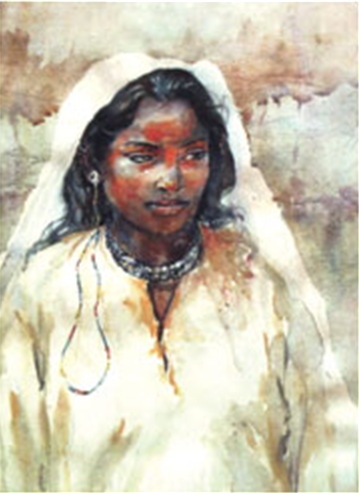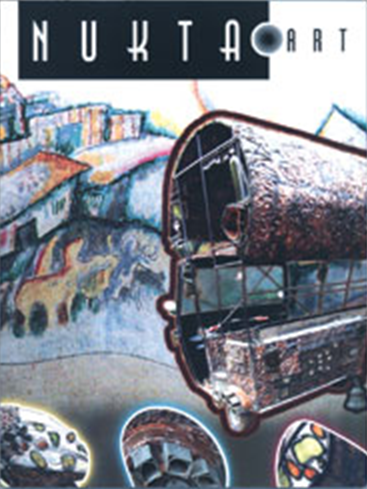Art: Pakistan
This is a collection of articles archived for the excellence of their content. Readers will be able to edit existing articles and post new articles directly |
Collective work of four art critics
Art encounters
By Moniza Inam
A collective work of four art critics — Niilofur Farrukh, Rumana Husain, Amra Ali and Sabiha Mohammed — the second issue of Nukta analyzes the work of various local artists like, Aisha Khalid, Imran Qureshi, Riffat Alvi, Arjumand Karim and Samaya Chakra. The team has yet again underlined their consciousness of art. In a changing society where aesthetic values and cultural heritage have been lost in the sordid atmosphere of intolerance, consumerism and the devotion to achieve material supremacy, the effort of the editors is commendable.
The magazine starts with the latest happenings in the field and dedicates four pages for its projection giving readers a quick review of the events taking place on the national and the international level. There is a highly interesting essay by Elona Lubyte who expounds the significance and importance of the museum in Lithuania.
Niilofur Farrukh explains the significance of museums in the context of the Pakistani society and explores the recent attempts by various artists who have established their own art galleries to preserve their work for future generations and the construction of the first purpose-built National Art Gallery in Islamabad by the government. These steps will help the state to sell the soft image of the country in the comity of nations.
M. Zulfiqar Ali explores the myths of violence in our class-ridden society and goes on to prove that art institutions and museums would help future generations to work for an egalitarian and just society. He believes that museums should target children as their potential visitors and they should be more relevant and inspirational for them.
In the art global section, Wijdan Ali explains the contemporary Islamic art scene in the Arab world and Simone Wille gives an interesting account of Venice Art Biennial exhibition. The photo essay by Dominic Sansoni titled, ‘Barefoot in Sri Lanka’ covers the portfolio and some of the photographs are very touching and sensitive. Zehra Zaidi interviews Maysaloun Faraj, a leading artist of contemporary Iraq based in the UK. Faraj elucidates her work, her frustration and anguish on the present state of affairs in her home country and her commitment to promote Iraqi art in these difficult and trying times.
Ashrafi S. Bhagat in her article narrates the emergence of Madras Art Movement which emerged in the `50s as the group of artists struggled to fight the identity crises which had emerged after the end of the colonial rule. They merged the Dravidian culture by synthesizing its varied traditional art forms with modernization and that experiment had become very popular and gave birth to new art movement.
John Holt and Laura Turney give a snapshot of South Asian art in the UK and prove that the arrival of Indian, Pakistani, Sri Lankan and Bangladeshi artists in the post-war period has been beneficial for both sides. The Nukta team gives tips on protecting paintings in the art conservation section. In the art collector section, they cover Tasneem Jatoi’s eclectic collection and give some outstanding photographs of her admirable collection.
In the architecture section, Asiya Sadiq covers the concept of having the living city as a museum and takes Karachi as the model. She explores the historical development of the city from a fishing village to the bustling megalopolis. She explicates the silent changes that have been responsible to transform the lives of citizens and writes: “When these changes in a city and society are not accompanied by an equal increase in appropriate housing, mass transport, infrastructure, social and physical amenities, mobility network and public space, it results in physical degradation, informal processes taking over, social alienation, chaos, insecurity, paranoia and apathy.”
The interview with Zarina Hashmi is very interesting as the New York based artist explains her spiritual and personal experiences of living in the West where after 30 years of stay she is still regarded as an outsider.
The bi-annual magazine is a commendable endeavor in which the editors are successfully providing a platform from where artists can share their feelings and a critical dissertation may emerge. The quality of the publication is good and the editing is crisp. The only drawback however is its steep price (Rs520) which makes it beyond the reach of many art admirers.

